Hawaii’s 137 islands may be scattered far across the Pacific from the U.S. mainland, but the eight largest ones often appear closely spaced together. It brings up how capable ferries and even bridges are at spanning the distances in between.
In reality, these islands are more distant from one another and are separated by vast, storied, and challenging ocean channels.
The question of how to connect the Hawaiian Islands more seamlessly has long sparked debates, from practical solutions to whimsical ones. While air travel has remained far and away the primary mode of inter-island transportation, some have suggested new ferries or even bridges as alternatives.
Ferries: Could they once again make a comeback?
Once a possibility of inter-island travel, ferries largely disappeared in Hawaii. The most notable attempt at revival, the Hawaii Superferry, operated briefly in the late 2000s, promising affordable and scenic transportation. However, it faced numerous obstacles, including environmental concerns, community pushback, and operational challenges, including rough waters in channels like the ʻAlenuihāhā between Maui and the Big Island and the Kaʻieʻie Waho between Oahu and Kauai, that caused sailings to be canceled.
Currently, ferry services are limited to specific routes, such as the Maui-Lanai ferry operated by Expeditions. This service is vital in connecting Lanai’s residents with essential services on Maui, but its small scale isn’t a substitute for air travel across the islands.
In a recent push, Maui County continues exploring the possibility of creating a publicly operated ferry system to serve Molokai, Lanai, and Maui better. This initiative gained traction following the Lahaina fire, temporarily displacing the existing Lanai ferry service to Ma’alaea Harbor. The county envisions a more sustainable, long-term solution, potentially funded by federal grants to upgrade harbor infrastructure and build custom vessels.
Do you remember the SeaFlite Boeing 929 ferry?
The SeaFlite service ran briefly once, with just three boats. It ceased largely due to financial issues, although seasickness, as with the Superferry, presented a significant problem on the ships.
The Hawaii Seaglider: innovation or not?
Adding to the conversation is the Hawaii Seaglider Initiative, an ambitious project to develop high-speed, zero-emission electric vessels to connect the islands. Announced with much fanfare, the seaglider has promised affordable fares (as low as $30) and a greener alternative to planes.
The seaglider’s development continues to face significant questions about environmental, technical, regulatory, and financial hurdles. While the seaglider represents one exciting vision for the future, its viability remains uncertain.
Why bridges remain a fantasy.
Some have suggested that bridges similar to Florida’s Seven Mile Bridge or Washington State’s floating bridges could solve Hawaii’s interisland connectivity issues. However, these ideas don’t hold up to scrutiny. Hawaii’s channels present extreme challenges. These channels are wide—26 to 30 miles sometimes—but also extraordinarily deep, reaching 6,100 feet.
While technically feasible in some parts of the world, floating bridges would be battered by Hawaii’s relentless trade winds, ocean currents, and Pacific storms. The cost of building and maintaining such structures would be astronomical. Additionally, the environmental impact on marine ecosystems and the cultural disruption they might cause make bridges a highly unlikely solution.
Why planes dominate inter-island travel.
Planes have been the backbone of inter-island travel since the mid-20th century, providing efficient and fast service between Hawaii’s major islands. We’ve seen many airlines come and Go!
Editor Rob remembers flying Royal Hawaiian in the 1980s between Honolulu and Princeville and United Airlines between HNL and Lihue. Now, Hawaiian Airlines,. Southwest Airlines and Mokulele are the only interisland carriers left.
Air travel avoids the logistical hurdles of Hawaii’s deep and turbulent ocean channels, offering consistent, year-round reliability. However, it isn’t without its challenges, which open the door for discussions around ferries and other alternatives.
Balancing connectivity with preservation.
Hawaii’s unique geography demands solutions that balance connectivity with sustainability. Planes remain the most practical option, but ferries and innovative projects like the seaglider could play a larger role, particularly as technology keeps evolving.
The push for a Maui County ferry system also speaks to the growing interest among stakeholders in sustainable alternatives. The Hawaii Seaglider, if ever realized, could revolutionize how people travel between islands, blending speed, affordability, and environmental responsibility.
While the allure of ferries and bridges unquestionably captures the imagination, and there remains much room for innovation, the practicalities of geography, cost, and environmental impact for now favor planes as the dominant mode of Hawaii interisland travel.
Photo Credit: Beat of Hawaii, the island of Molokai seen from Lanai.
Get Breaking Hawaii Travel News
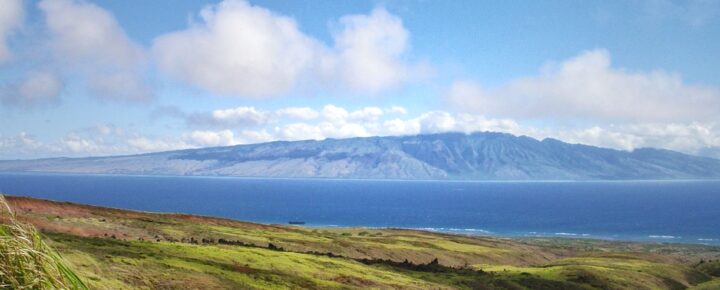
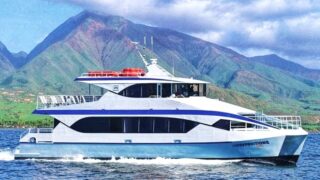
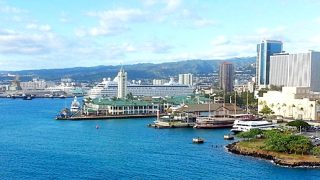
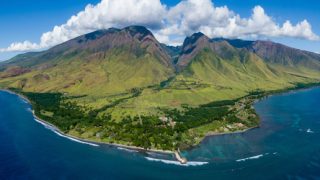
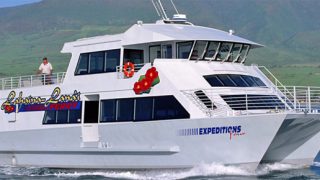
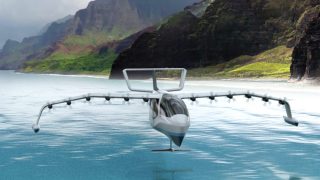
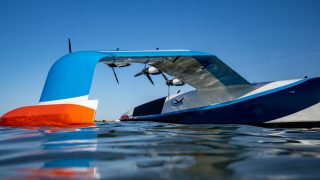
For the Maui Marathon my wife and I did Honolulu to Maui via a Seaflite hydrafoil in March of ’77. What a cool ride swooping thru the swells, riding over a crest and dropping into the trough. No seasickness, but I can imagine there was plenty to deal with. The ride home was in really sloppy conditions…just added to the enjoyment and hats off to the Captain.
We live on a “big” island, and rely on ferries for travel to the mainland. Plane travel is expensive and generally reserved for holiday travel as part of a longer flight. Ferries are also expensive-in our case a round trip for two with vehicle is north of $250. Ferries require massive capital outlay and infrastructure, and an ongoing subsidy to keep fares affordable. They are also subject to frequent cancellations due to weather, and travel requires planning ahead, with expensive, non refundable reservations, unless you want to sit in long lineups. I would not call them environmentally friendly or sustainable- if that’s your goal you’ve priced yourself out of the market already. Be careful what you wish for-the grass is not as green as you think on the other side.
If the cruise ships can’t tender their passengers ashore during high swells, how will the Seaglider manager to land, let alone dock?
Hawaii’s inter-island flights must become part of the Essential Air Service (EAS) program.